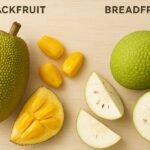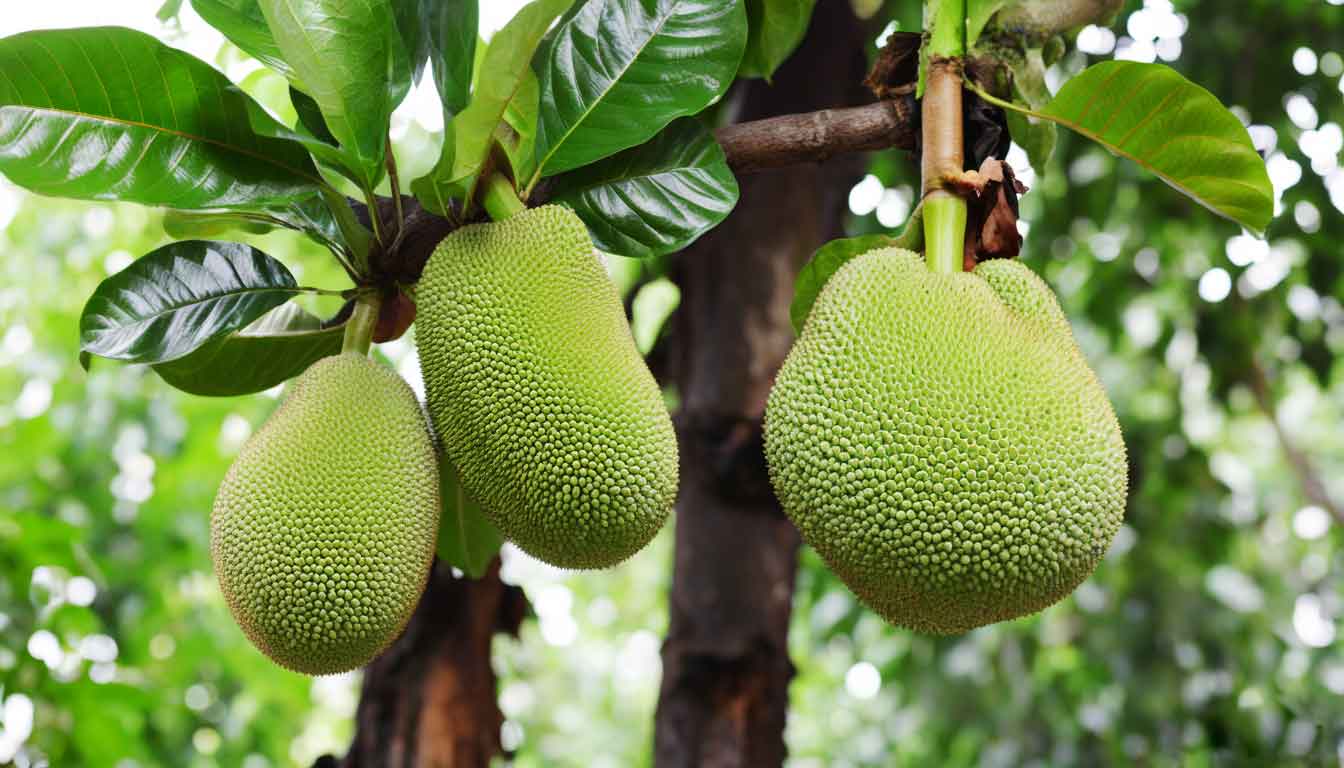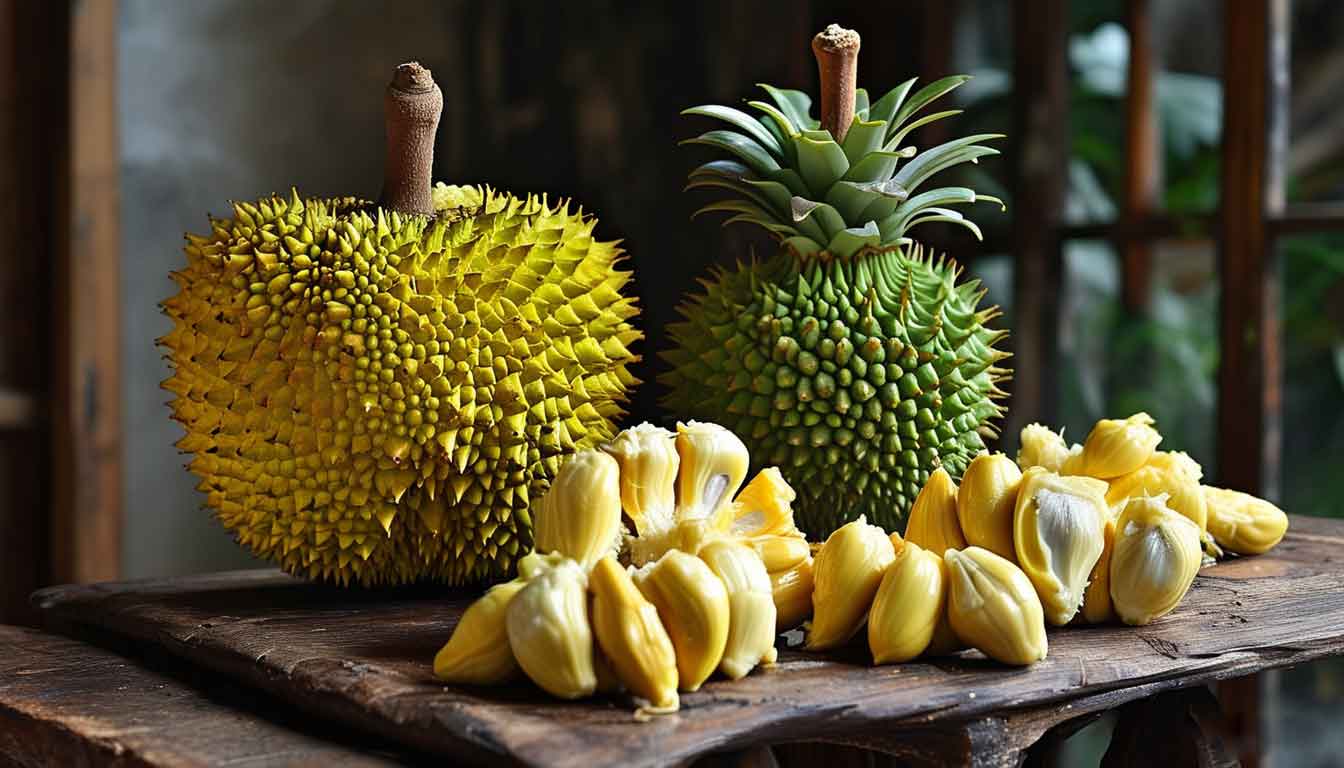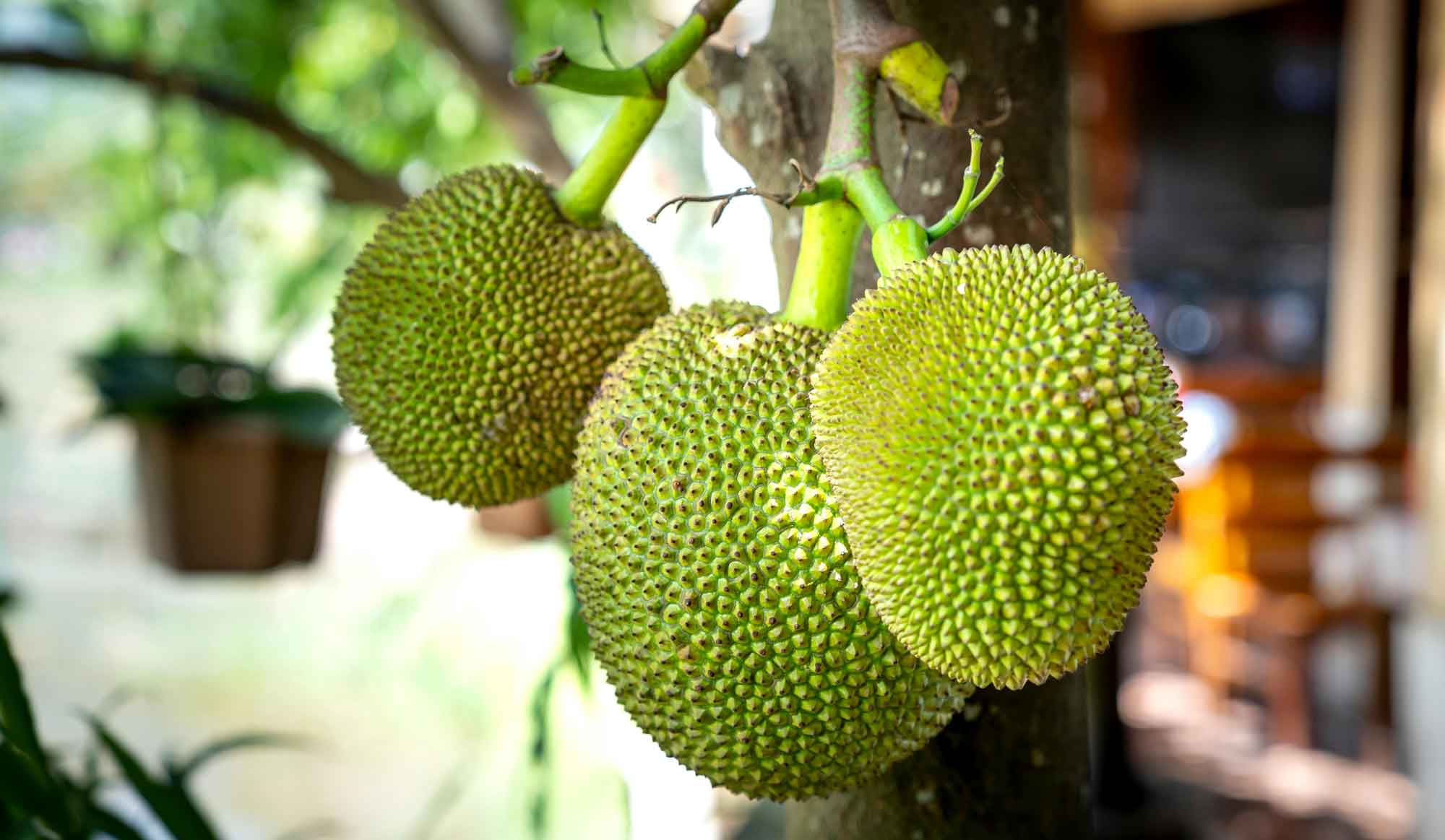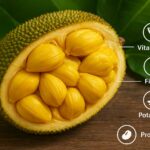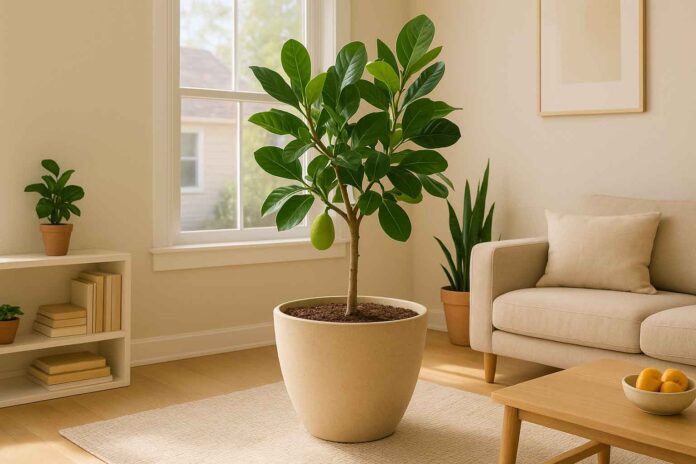Can Jackfruit Grow in Florida?
Short answer: Yes, jackfruit grows well in parts of Florida, especially in warm, humid areas like South Florida and along the coast.
What Is Jackfruit?
- Scientific name: Artocarpus heterophyllus
- Common names:
- English: jackfruit, jak
- Spanish: jaca
- Portuguese: jaca, jaqueira
- Family: Moraceae (same family as figs, mulberries, breadfruit, and champedak)
Where Does Jackfruit Come From?
Jackfruit likely originated in India and thrives across tropical Asia—places like India, Sri Lanka, Myanmar, southern China, Malaysia, and the Philippines. From there, it has spread to Australia, parts of Africa like Kenya and Uganda, the Caribbean, Mexico, Central and South America—and it’s even grown in Hawaii and southern Florida.
Can Jackfruit Grow in Florida?
Absolutely! In South and coastal Florida, the climate is just right:
- These areas are humid, warm, and have very few freezing nights—ideal for jackfruit.
- Trees can reach 30–40 feet tall in Florida’s milder climate.
- Young trees may produce fruit in just 3–4 years.
- Mature trees commonly yield 150 pounds (about 68 kg) or more per tree—some varieties yield up to 250 pounds.
- The growing season in Florida runs through summer and fall, with most fruits ripening then.
Tree & Leaf Characteristics
- Tree size: Large, evergreen—30 to 40 ft tall in Florida.
- Leaves: Dark green, shiny, leathery. Young leaves may be lobed; all contain milky latex.
- Branches: Short fruiting twigs (with both male and female flowers) grow directly from the trunk or large branches.
The Fruit
- Jackfruit is a “multiple fruit,” formed from many flowers fused together.
- Fruits weigh 4.5–27 kg (10–60 lb), though some cultivars stay smaller (1.4–4.5 kg / 3–10 lb).
- Skin: Very thick, rough, green to yellow/brown when ripe.
- Inside: Aromatic, sweet, crispy or soft pulp around seeds, with a fibrous “rag” in between.
- Seeds: Oval, 2–3 cm long; each fruit may contain 30‑500 seeds.
- From flowering to ripe fruit takes about 150–180 days.
Best Growing Conditions
- Climate: Hot, humid tropical or subtropical climates—exactly like parts of Florida.
- Water: Moderately drought‑tolerant, but needs water during dry stretches, especially when young or fruiting.
- Soil: Prefers well‑drained soil (e.g., sandy or loamy).
- Cold sensitivity:
- Leaves damaged at 32 °F (0 °C)
- Branch damage at 30 °F (–1 °C)
- Trees killed at 28 °F (–2 °C)
- Flooding: Not tolerant of prolonged waterlogging.
- Wind: Tolerates strong winds—many survive Florida hurricanes with limb damage.
Planting & Care in Florida
Propagation Methods
- Seed: Fast fruiting (3–4 years) but less predictable traits.
- Grafting: Preferred for consistent fruit quality—methods like veneer, cleft, or chip budding.
- Air‑layering / Cuttings: Possible, but less common.
Spacing & Soil Preparation
- Plant trees 25–30 ft apart if not pruning, or 20–25 ft if regularly pruned.
- Planting hole: 3–4× container diameter and 3× deep.
- Avoid root‑bound nursery trees and mix compost or topsoil 50/50 with native soil if needed.
- In shallow or rocky areas, consider raising soil in a mound to avoid flooding.
Water & Mulch
- Young trees need regular watering; mature trees need water during dry spells and fruiting.
- Mulch 2–6 inches (5–15 cm) thick—keep it 8–12 inches (20–30 cm) away from the trunk.
Fertilizer & Nutrients
- After planting: apply about ¼ lb (113 g) of balanced fertilizer (like 6‑6‑6) every 8 weeks in Year 1.
- Later: 2–3 fertilizer applications from bloom to after harvest.
- Soil and foliar iron sprays help in calcareous or high‑pH soils.
Pruning
- Young trees: Minimal pruning year 1; in year 2 prune to first lateral branch.
- Mature trees: Remove upright shoots and old flowering wood after harvest; maintain canopy at 8–14 ft tall if desired.
Harvesting & Ripening
- Green fruit (immature): Harvest after 1–3 months for cooking.
- Mature fruit: Look for color changes, flattened spines, strong aroma, and hollow sound when tapped.
- Harvest carefully—latex is sticky. Let fruit sit until latex stops before handling.
- Ripens in 3–10 days at 75–80 °F (24–27 °C); slower under 60 °F (16 °C).
- Refrigerate pulp or freeze ripe segments.
Uses & Nutrition
- Immature fruit: Used like a vegetable in curries, fried dishes, or baked meals.
- Ripe pulp: Eaten fresh, dried, preserved in syrup, or added to salads.
- Seeds: Can be boiled or roasted—taste like chestnuts.
- Nutrition: Low in fat and calories; good source of potassium and vitamin A.
Quick FAQ: Can Jackfruit Grow in Florida?
- Yes, particularly in South and coastal Florida due to its warm, humid subtropical climate.
- Plant carefully: Provide good drainage, water young trees, protect against cold and flooding.
- Grafted trees offer consistent fruit quality, while seed-grown trees fruit earlier.
- It makes a great addition to home landscapes—both beautiful and productive.

